Politics
How Some Dalit Leaders Framed A Jatav-Valmiki Land Dispute In UP As A State-Versus-Ambedkar Issue
Swati Goel Sharma
Jul 07, 2024, 01:33 PM | Updated 01:31 PM IST
Save & read from anywhere!
Bookmark stories for easy access on any device or the Swarajya app.
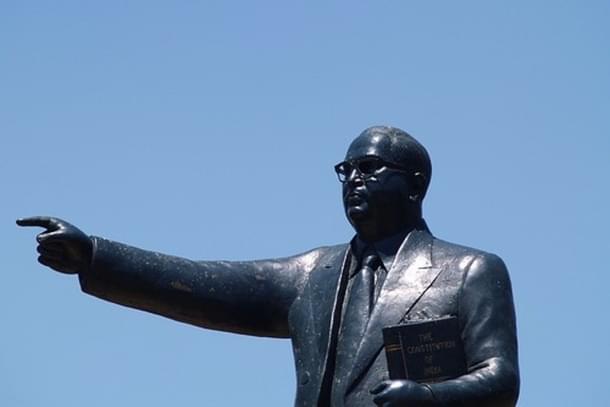
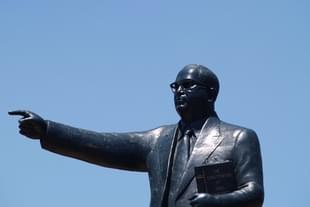
Despite falling under the broader category of Dalits, disputes between marginalised communities are not uncommon, often revealing how Dalits are not a single, unified group.
These disputes also highlight internal caste hierarchies, with Dalit leaders sometimes favouring the stronger sub-castes over others.
A recent incident in Bijnor district of Uttar Pradesh illustrates this dynamic.
A land dispute between Jatav and Valmiki families escalated dramatically when the Jatav side forcibly installed a statue of Dr B R Ambedkar on the contested plot.
A month earlier, the district court had ruled in favour of the Valmiki family, declaring them the rightful owners.
Dalit leaders hailing from the Jatav caste flocked to the site, warning law enforcement and local authorities of potential violence should the statue be removed. Meanwhile, the Valmiki group urged the police to restore their access to the land.
This move placed the local police in a difficult position, as these activists framed the conflict in public as one between the 'upper caste' police and administration versus Dalit leader Ambedkar.
The dispute was ultimately resolved through an equally dramatic police operation, elaborated later in this report.
Dynamics Among Dalit Sub-Castes In UP
Scheduled Castes make up about 21 per cent of Uttar Pradesh's electorate. Jatavs constitute 11.7 per cent of the state population, followed by Pasis at 3.3 per cent and Valmikis at 3.15 per cent. Smaller groups, including Gonds, Dhanuks and Khatiks, collectively represent an additional 2.8 per cent.
The Jatav community, predominantly associated with leatherwork, thus makes up more than half of the Dalit population, while Valmikis, traditionally sanitation workers, are less than one-third the numerical strength of Jatavs.
Both communities have historically faced severe socio-economic deprivation and discrimination.
The post-independence India saw political and social mobilisation of several such marginalised communities under a modern, constructed Dalit identity. In UP, the Bahujan Samaj Party (BSP) emerged as a formidable force advocating for Dalit rights in the 1990s, and continues to wield significant influence even today.
However, the political ascendency of the Dalit identity has not equally benefited all Dalit sub-castes. When in power, BSP chief Mayawati was often accused of favouring her own Jatav community in party positions and in accessing reservation jobs and schemes.
This disparity often underlies the Dalit sub-castes clashes.
What Happened In Bijnor
On 14 June, Prem Pujari, a resident of the Shahchandan area in Bijnor, lodged a complaint with the Chandpur Police Station. He alleged that while he was undertaking construction on his plot of land, a group of men and women from a particular caste attacked him and seized his construction materials.
According to Pujari, the group later returned and forcibly erected a statue of Ambedkar on the site.
Pujari included in his complaint a copy of a court order dated 29 May, 2024, issued by a Bijnor civil judge, which confirmed his ownership of the plot. The court order shows that the dispute over ownership of the land had been going on for three decades.
While Pujari belongs to the Valmiki caste, the other side belongs to the Jatav side.
In response to the complaint, the police registered a first information report (FIR) on June 14, 2024 (FIR number 297), naming more than 50 individuals identified by the complainant. The accused were charged under several sections of the Indian Penal Code, namely 147, 148, 149, 323, 504, 506, 427, 447, and 379.
The police subsequently arrested two individuals, Shivcharan Singh and Sachinraj, in connection with the incident.
The police also issued a directive to the accused group, instructing them to remove the statue within two days.
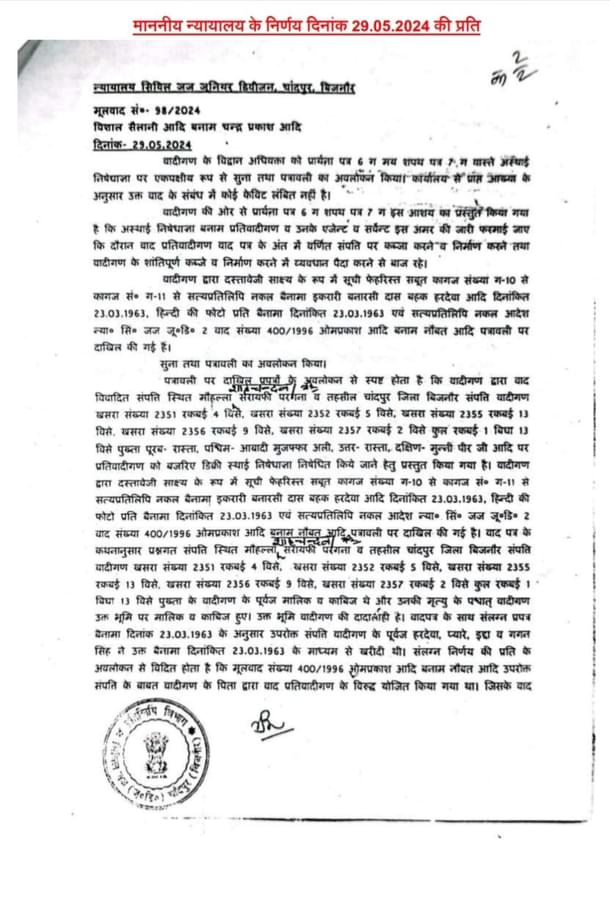
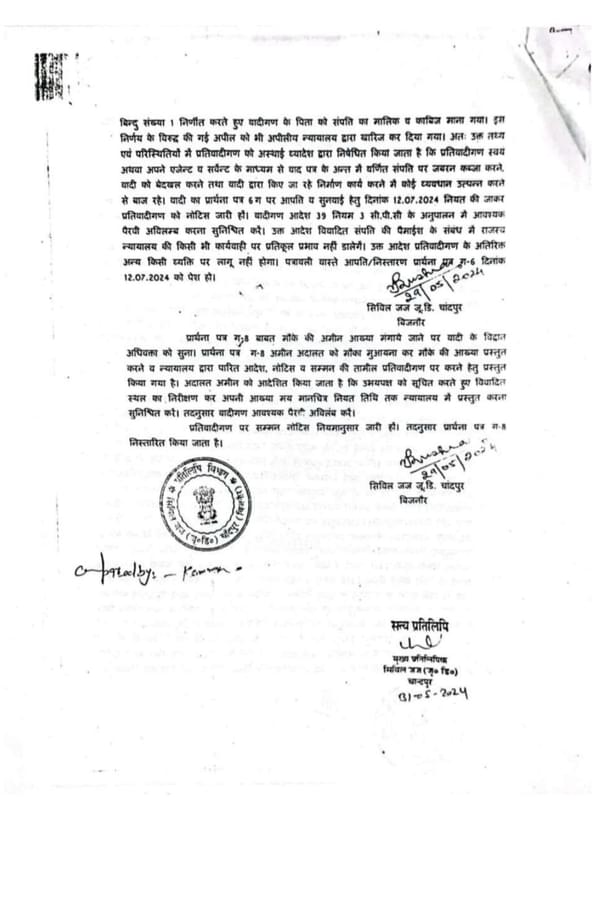
Dalit Leaders Warned Of Violence
What initially appeared to be a local dispute quickly escalated into a state-wide caste issue when Dalit-Ambedkarite leaders intervened, cautioning the police against removing the statue, framing the issue as one between the Yogi Adityanath government and followers of Ambedkar.
Among these leaders was Satpal Tanwar, founder of Bhim Sena, an organisation named after Ambedkar. In now-deleted social media posts, Tanwar warned the Bijnor administration and police of significant unrest if the statue was taken down.
The posts said that the "Yogi government" was conspiring with "RSS goondas" in removing an Ambedkar statue, thus hurting Dalit sentiments.
Tanwar, who hails from the Jatav caste, has a history of controversy. He was previously charged with abetment after singer-dancer Sapna Chaudhary attempted suicide following an online hate campaign that he allegedly incited.
In 2022, Tanwar made headlines when he offered a bounty of Rs 1 crore for the beheading of former BJP spokesperson Nupur Sharma, following her remarks about Islam’s founder during a TV debate. His Twitter account was subsequently suspended, and he was arrested for issuing the death threat but was later released on bail.
Before declaring the bounty, Tanwar made disparaging remarks about Sharma, posting, “If the government of this country, the government of Uttar Pradesh, Yogi Adityanath, and Narendra Modi are not capable of taking action against Nupur Sharma, they should hand her over to Nawab Satpal Tanwar. I will make her perform mujra in public. I will make her do mujra in front of me. Then I will punish her as I like. Bring her to Satpal’s court. If Nupur Sharma is presented in Satpal’s court, the whole country will see that dancer doing mujra in front of Nawab Satpal Tanwar.”
Police Removed The Statue In The Wee Hours
In the early hours of 20 June 2024, Bijnor Superintendent of Police Neeraj Kumar Jadaun led an operation to remove the statue with the assistance of district administration. Jadaun told Swarajya, “The statue was an encroachment as there is a court order asserting Prem Pujari’s ownership of the plot. We did what was right under law.”
Heavy deployment of police throughout the day prevented any agitations over the removal of the statue, which Jadaun says, “was removed without even a scratch”.
Since then, police have maintained a presence in the area.
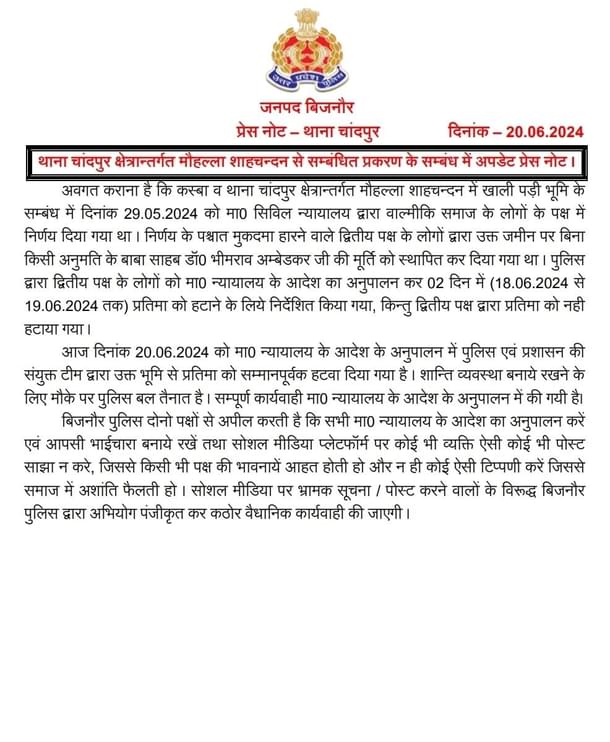
Jadaun said that the police were also examining the role of Tanwar in inciting potential violence.
Prem Pujari told Swarajya that he was thankful to the administration for “saving him from being a pawn in Dalit politics”.
“I am a simple man. I did not wish to be a part of politics over Ambedkar,” he said, adding, “Those warning of protests against the removal of the statue never stated in the public that the other side here is also Dalit.”
Swati Goel Sharma is a senior editor at Swarajya. She tweets at @swati_gs.





